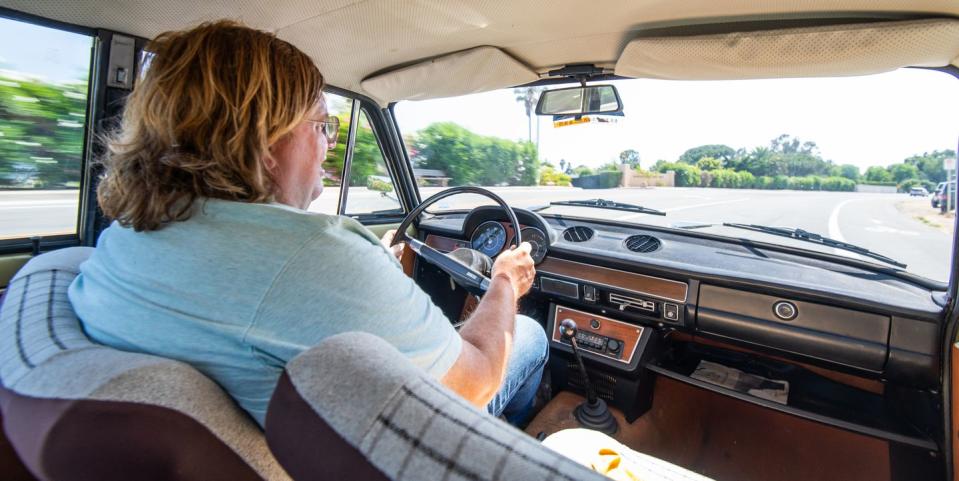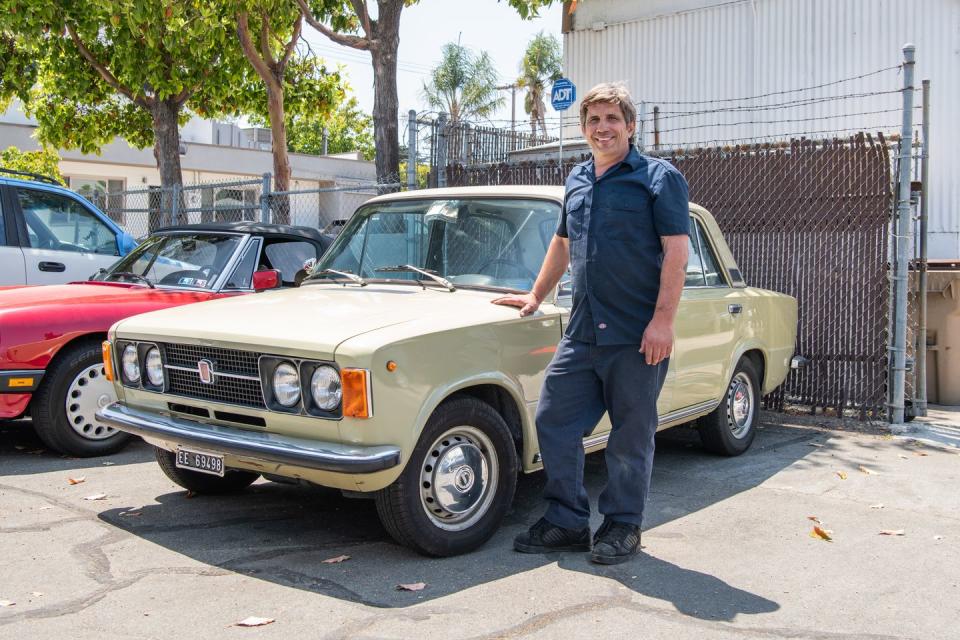1971 Fiat 124: Just Like Mom Drove

When I was a kid, my mom, Lorayne, drove a 1971 Fiat 124 Special Sedan exactly like the one I'm sitting in now. Same color even. I learned to drive, taught myself to do Rockford-style reverse 180s, and was terrified behind its wheel more than once. But it was always Mom's car and she had it from the time I was finishing fourth grade until my second year in college. She's had a Subaru, two Hondas, a Mazda, a BMW, and a Ford Tempo since, but never a car that reflected her personality quite like the Fiat.
Our neighbors in the 1970s were the Valsecchis and patriarch Emilio Valsecchi owned Emilio's Foreign Cars here in Santa Barbara. He was the Fiat and Alfa Romeo dealer and when it came time to buy anything, we went to Emilio first because friendly relationships on St. James Drive mattered. That was fine; mom is half-Italian, competent, and has always loved manual transmissions. Mom never really cared about cars, but her affection for shifting qualifies her as a hardcore enthusiast by 21st-century standards.
So, when she bought her new 124 off Emilio's lot, she didn't flinch at the long-handle four-speed between the squishy soft, brown vinyl seats. Scaled to her five-foot three-inch frame, roomy enough to swallow three rowdy pre-teens, and adequately rugged, it was the perfect match of mother and machine. The 124 was her to the core.

Emilio has passed but his son, Emilio Jr., is still here in town and has long run his own shop, A&A Import Service, where he specializes in Fiat and Alfa Romeo service. About a month ago he posted a photo of his latest acquisition to Facebook, a 1971 124 Special. It lacked Mom's roof rack, but otherwise it was a clone. It was almost creepy to see it. I craved it immediately.

At 159.8-inches long overall, the 124 is almost two feet shorter than a 2020 Civic sedan and rides on a 95.3-inch wheelbase that's down 11 inches from that massive Honda's. The Fiat has almost no front overhang and a pure three-box shape that could have been drawn by any of several great apes. The chrome bumpers look so delicate it appears they would fold up if the car hit a souffle. It's clean and pretty, unspoiled by the botchery that would eventually corrupt it and turn it into the Lada. And while today's lightest Civic Sedan wallows with 2762 pounds of jiggle, the 124 Special comes in at maybe a taut ton. A ton sitting on four steel wheels inside 175/70R13 Sava Effecta tires. And there are tiny little disc brakes behind each of them.
It's a genuine rear-driver with a solid axle in back located by four-links and a Panhard bar on coil springs. The front end is on double A-arms. That's exquisitely ordinary for 1971, but in the 21st century it's describing the first ox cart. God, I miss ox carts.

Emilio's 124 is a recent arrival from Italy and so the instrumentation – what little there is – is in this weird thing called "metric." Also, unlike in the United States, where my mom's 124 Special used a 76-horsepower 1.4-liter overhead valve four, this import has an early example of the 80-horsepower Aurelio Lampredi-designed dual overhead cam version under its hood. That's the same guy who designed the great early Ferrari engines. It's the protoplasm from which would emerge powerplants for World Rally legends including the Lancia's 037 and Delta Integrale. It racked up 10 WRC manufacturer titles.
Fiats in the 70s earned a reputation for unreliability, but Mom's was a pack mule for a decade. And part of that reliability is simply because there's so little that can wrong in a car this primitive. There's no power anything to fail; the radio gets AM and FM and nothing else; there are door vent wing windows instead of air conditioning; and video screens were science fiction in 1971. The instrumentation, what little there is of it, is straightforward and even kind of pretty. There's painted metal visible on the doors and an in other spots around the interior, the door panels are handsomely trimmed and the thin steering wheel has only two spokes and zero airbags. Ventilation system is mostly two round vents centered on the dash top that simulate the warm breath of an asthmatic Italian goat.

 Yahoo Autos
Yahoo Autos 